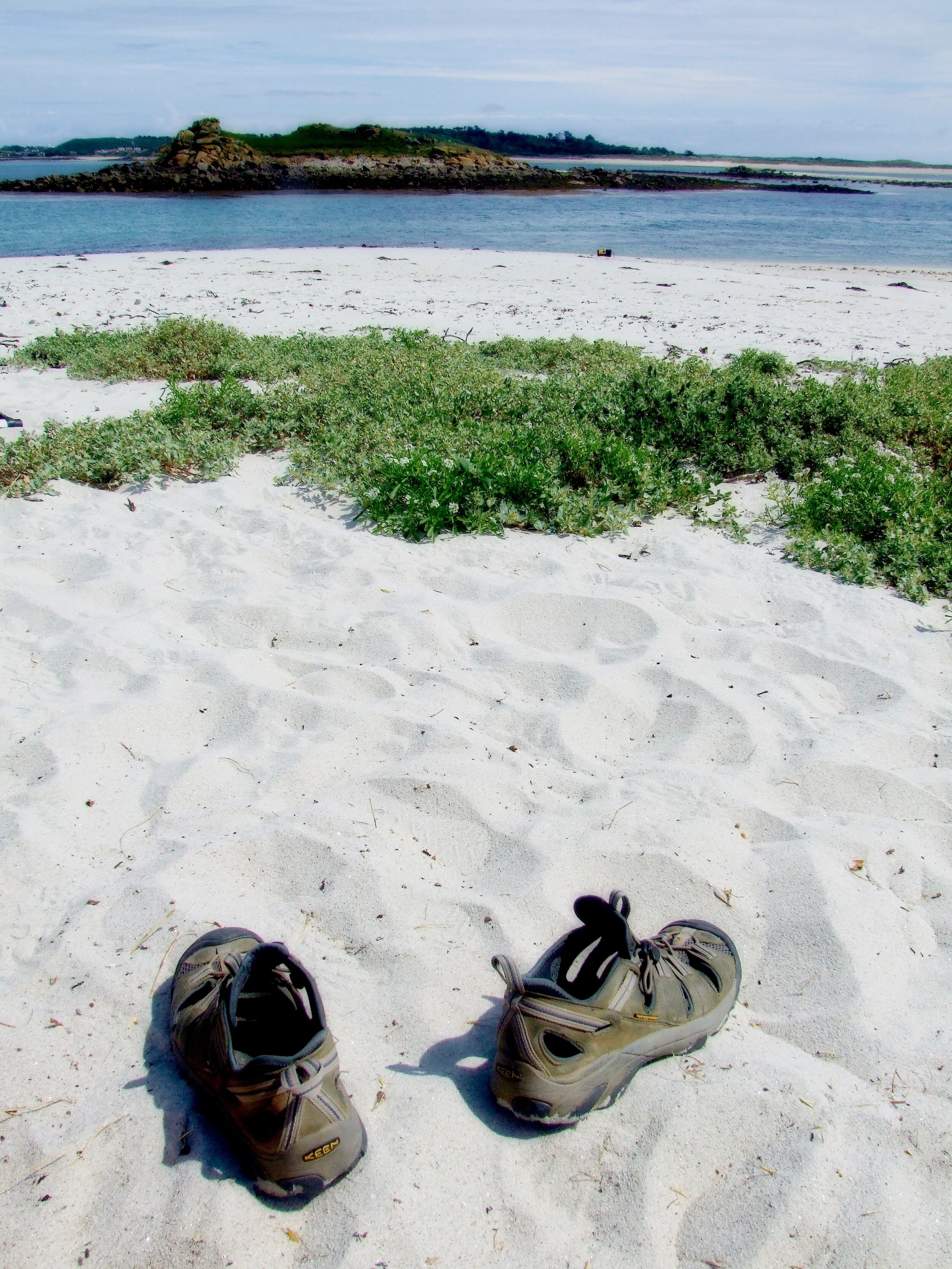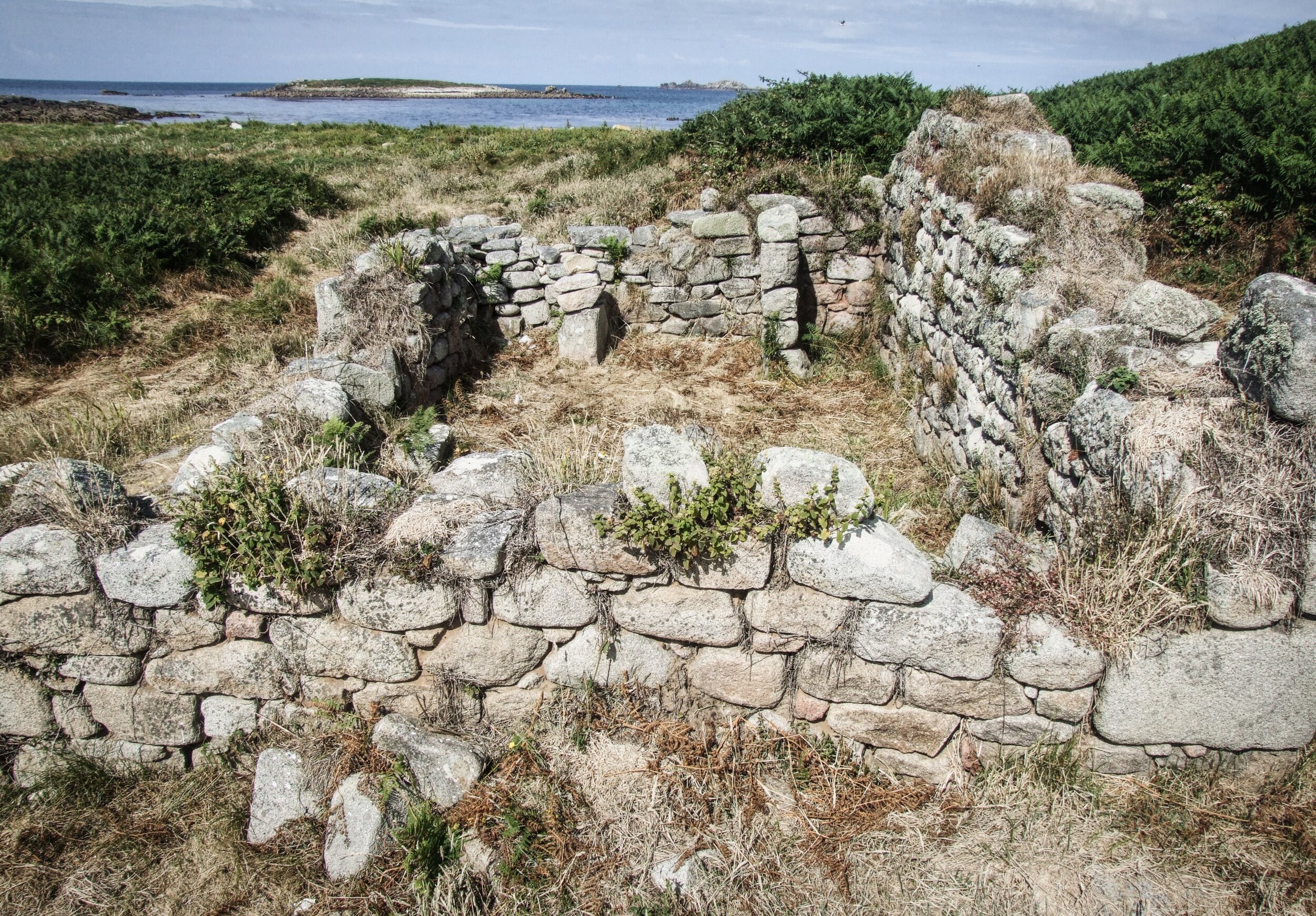Scilly Walks 3 - Uninhabited Isle of Samson
Cancellations are a fact of life, but they almost always leave to a sense of disappointment in one way or another - and if you’ve been promising yourself a walk on a beautiful uninhabited island that sense of disenchantment can be even more profound.
You tend to have the beaches to yourself on uninhabited Samson
Samson haunts me. Its beautiful pure white beaches, its clear waters and windswept heaths, its twin hills and ruined farms, its unutterable loneliness - all have haunted my thoughts on a regular basis ever since I stepped upon its hallowed shores many years ago.
On that occasion I had been invited to witness the remarkable sports day which the archipelago’s primary schools enjoy on the huge white beach each year. I don’t know whether they still do it, but I recall the occasion as being one of the most remarkable I have reported on in the all years I wrote for the South West’s main daily newspaper.
So you can imagine how disappointed I was one year to realise my annual visit to the WalkScilly hiking festival wasn’t going to happen. I’m still not quite sure why the arrangement fell through - but my slender consolation was that weather of the beastliest kind hit the West Country on the day I was meant to be leading a walk.
Obviously, the trip over to uninhabited Samson which I’d promised myself obviously didn’t materialise - so I made amends by revisiting the island in an article which appeared across the newspaper group and which proved hugely popular.
Why? Because there is something unique and unequalled about exploring an uninhabited island. Solitude cloaks you from head to foot, but it's more than the sensation of aloneness.
My old friend James Stedeford (right) took my to Samson early one morning many years ago
There are boat trips to Samson throughout the summer, though times vary thanks to tides and shallow approaches - or if there's a group of you, chartering a boat is not the costliest thing in the world.
It's a 25 minute voyage from the harbour at St Mary's to the landing bay on Samson. A quick dinghy ride and you are on the sands.
The first thing that greeted me on my last visit was a brief but heavy rainstorm, so I sheltered in the rocks just under the low peak of North Hill. It was rather pleasant, huddled there under a granite overhang, watching the shower chase across neighbouring Bryher and on to Tresco, then Tean and lastly St Martin's.
If the weather does catch you out, you can always shelter in one of Samson’s ruined cottages
Then the rain was gone and all I saw for the rest of the day was wall-to-wall sunshine. I climbed the rocks to the very top of the hill - which must be all of 80 feet in height - and from there you can admire three-quarters of the archipelago stretching around us.
Next I skirted around the northern coastal edge of the island and into the western bay - I could have simply marched down the central path, but it’s always fun to walk around an island rather than march directly across it.
Between the island's two hills there is a low, narrow, grassy plain that also divides the eastern and western beaches. A thousand gulls will come to see what you’re up to as you explore this area, and a thousand more will sit watching you from the old stone walls that line South Hill. They are, for the most part, lesser black-backed gulls, and they will have about them the look of the sinister and celebrated birds in Alfred Hitchcock's famous film. Perhaps it’s something to do with the way they muster on each and every stone - watching your each and every move.
I decided to ignore them and sat there on the sands looking out to neighbouring White Island while thinking about the people who used to live here.
You can still see the remains of their farms dotted across the island - particularly up on South Hill where the old fireplaces still bear the soot of blazes past. The Webbers and Woodcocks were the only families that lived here.
Legend has it they were descended from wrecked sailors or pirates and at first they lived on St Mary's, but fled after a long-running feud with the Banfields and the Mumfords, who ran things for Lord Godolphin - then the owner of the Scillies.
One of the many ruins on Samson
The fighting finally led to the archipelago bosses - the Mafia-esque sounding Council of Twelve - sending the military to arrest Liquer Webber and Dicebox Woodcock who were ordered to take their families to live and serve in various military batteries around the main islands in the Scillies.
But Liquer and Dicebox were not interested and they escaped with their families to Samson.
I once found this note regarding the story: “Their numbers grew, but the families were badly hit in the 1750s when nineteen of their men were lost when the French pirate ship they had just captured capsize and sank. They had forgotten they had earlier put holes in the hull to slow it down. The surviving women largely married into the other islands but a core remained. Eventually Samson couldn't support the diminishing Woodcock-Webber tribe and the last of them were finally forcibly removed, bedraggled but protesting, in 1855 by the new owner, Augustus Smith,” says the author of www.cwoodcock.com/scilly.
All good stuff that leaves you plenty to think about as you climb South Hill and walk down to the southern tip of the island. On the way you pass a ruined cottage which is said to have been the abode of Amorel of Lyoness, heroine of Sir Walter Besant's novel of that name.
So much interest in one little island. Not so little actually, it’ll take you at least an hour-and-a-half to circumnavigate the length and breadth of Samson. But of course, it is tempting to linger much longer - with a bottle for company and something to eat I could happily spend the night out there listening to the birds that haunt the skerries.
Fact File
Basic walk: circumnavigation of uninhabited Samson.
For information on boats to island check out www.scillyboating.co.uk (01720 423999)















